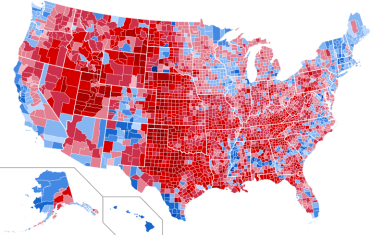
Organizations need a data analytics platform and data analytics tools that assist throughout the entire journey from data ingestion to insights.
Most organizations today are blessed with an abundance of data, which, if properly analyzed in a timely manner, can help improve decision-making, operational efficiencies, and more. However, many organizations are not in a position to realize the true value of that data.
RTInsights recently sat down with Mark Do Couto, SVP for Data Analytics at Altair, to talk about the need to operationalize data and analytics efforts, the technical and human challenges that must be overcome, and how Altair can help.
Here is a summary of our conversation.
RTInsights: Why do companies want to operationalize their data and analytics efforts?

Do Couto: One reason companies want to operationalize their data and analytics efforts is that there is an increased amount of data that is coming in. If they don’t find a way to help organize all that data and wrap it together in a way that makes sense, then it’s going to be a lot more difficult to leverage that data to make intelligent business decisions.
That’s the real transformation organizations have been going through over the last few years – how do they take some of the business decisions that they have been making and really start to look at the data to help make those business decisions? So, it’s important that the data is structured in a manner that it can be understood.
Analytics has a lot of different components to it. Data obviously feeds the analytics. But if that data is not structured in a certain way or arranged in a certain manner where it can be consumable for different elements of analytics, it becomes a lot more difficult.
So, it’s really important that those two elements come together.
See also: Taking HPC to the Next Level for Semiconductor Design and Other Industrial Segments
RTInsights: What are the common problems a business can have with respect to its data?
Do Couto: There’s a laundry list of them, but there are a couple of key ones. Number one is access to data. When you talk to a lot of different organizations and customers, they say, “We have a lot of data.” But the question is, where is the data residing? Is the data locked into proprietary machines? Is it locked into certain systems? Is it in some cloud provider network? Getting access to the data so you can then leverage it is probably one of the key problems.
The other key problem is organizing that data and bringing it together. Data can be in multiple different areas of the business. Do you have the tools or the ability to bring that data together? Do you know how the data should be merged, and can you coordinate getting all those different elements as you’re starting to go about leveraging that data?
Therefore, I would say the two biggest problems are access to data and being able to prepare and gather that data together.
RTInsights: What technical issues do you have to overcome to build smart data in the analytics pipelines?
Do Couto: There are many different technical issues to overcome. Number one is probably the tool sets. Again, what do you have that can consume the data or set up the analytics? If you’re talking to new grads coming out of academia, a lot of them are learning to code in R and Python.
That’s great, and there’s nothing against that, but the challenge there is that everyone learns how to program a little bit differently, just like everyone knows or learns how to write English a little bit differently. That same coded language can be interpreted differently by different people in the organization. The organization needs to understand what the tool stack looks like so it can build some foundational kind of fundamentals around data and analytics.
Another technical issue is that there are a lot of cloud providers out there. Which one is the organization going to be working with? Is this arrangement flexible, so you’re not tied or locked in with just one cloud provider? One of the things that we have been hearing from customers is, “We’ve selected this cloud provider. We really like it, everything’s great with it, and we’ve got all these toolsets and everything within that cloud provider.”

Well, the challenge is, if down the road, that cloud provider decides to increase their price 2X, 3X, or 5X, are you stuck with all the tools and models and all the data residing there? What’s the flexibility to move to different cloud providers to make sure you’re not completely kind of vendor locked?
I would say those are some of the key technical issues that we see.
RTInsights: What are the human issues? Do companies have skillset issues? Is there interdepartmental friction?
Do Couto: Many new grads and other people in the industry know programming languages like R and Python. That is great and makes them highly valuable to an organization, but the one big challenge is they’re not cheap, and they’re not easy to come by. The really talented people, and the ones that are working within your organization, are probably getting recruited on a daily, if not weekly, basis.
When we talk about some of the human issues, looking into the skillsets, it’s about how users and organizations set up an analytical framework that can be leveraged by these highly skilled, highly talented statisticians or data scientists. At the same time, you want the framework to be visual and easy to use and have a drag-and-drop-type environment. In that way, you can get into the tool and start to gain insights from it quickly.
So, to address the skillset challenge, you have to provide a platform where you don’t have to have someone super technical that can go in and leverage the tools to gain insight from the data.
RTInsights: What’s needed for success, and how does Altair help?
Do Couto: What’s needed is a real understanding of start to finish, including data ingest, the data journey, data understanding, and data exploration. On the analytics side, model building, model testing, validation, optimization, model deployment, and model management are critical. What’s needed for success is for all those different components to get wrapped together and understood within the organization.
Altair has a data analytics platform and a number of data analytics tools that can assist throughout that journey. I think what’s unique with Altair is that we have a licensing model that gives all of our customers access to all of these tools.
So regardless of where you are in your data journey, you will have access to all the tools you need to not only solve the challenge where you’re at in that data journey but you can also use those tools to build out that complete data journey from start to finish. So, Altair is really positioned nicely in this data space to help our customers throughout that process.






